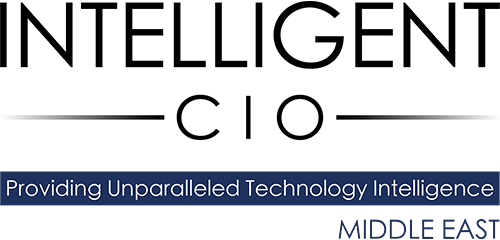John Colgrove co-founded Pure Storage and holds over 300 patents in the area of computer system and reliable data storage design. In discussion with Managing Editor, Arun Shankar, he shares his thoughts on how to manage growth, innovation, open communication, product complexity and sprawl, software development, in Pure Storage that he cofounded more than a decade ago.
John Colgrove or Coz is Founder and Chief Visionary Officer at Pure Storage. He is responsible for developing and executing Pure Storage’s global technical strategy. Coz co-founded Pure Storage in 2009 and holds over 300 patents in the area of computer system and reliable data storage design.
Prior to Pure Storage, he was the Entrepreneur in Residence at Sutter Hill Ventures. It was there he observed the growing acceptance of solid-state storage by enterprises. Coz was also one of the founding engineers at Veritas Software, which merged with Symantec in 2005, where his 20-year career culminated as Fellow and Chief Technology Officer for the Data Center Management Group.
He was the primary architect for the hugely successful Veritas Volume Manager and Veritas File System and later served in various other engineering, management, and consultative roles. Prior to Veritas, Coz worked for Amdahl Corporation where he was a key contributor to the development of the UTS mainframe UNIX operating system kernel.
Colgrove shares his thoughts with Managing Editor, Arun Shankar, on how to manage growth, innovation, open communication, product complexity and sprawl, software development, in Pure Storage that he cofounded more than a decade ago.
Managing growth, delegation, change
Innovative and technology organisations are constantly changing to improve products, services and the value they offer to existing and new customers. Fundamental requirements to deliver this is an organisation that is well connected top to bottom and a driver of change and a driver of advocacy.
“I get involved with lots of different things because I am still passionately committed to growing the company and growing the company is a lot of fun. I decide the things that are important. One of the things that I do spend a lot of time on is trying to continually improve the company. We are a company that is still growing at a good clip and when you grow, things have to change,” says Colgrove.
It is really important to keep evolving the way a business does things. And every high-tech company knows you need to keep evolving the products and you need to keep improving the products.
The most important aspect is how to organise the business as customers you sell to evolve and their use cases evolve. You have to keep changing the sales team, and changing the marketing message. How information is disseminated inside the business needs to keep changing. This continuous change is something that needs to be driven from the top. As you get larger, a lot of people are afraid to change things.
“The company has a way of doing something and while we like it, it works for us,” explains Colgrove.
If you want to develop a product in a robust fashion, you make sure that the lead engineers who are designing it and driving it, are responsible for the whole thing. They need to be able to jump into whatever piece of it they want.
Up and down the organisation, if you want to develop a really healthy, really strong organisation, you want your best people to be completely free agents to jump in wherever they are needed. And it just helps you to build a better product; and a more robust product helps you to build a better organisation.
“I spend some time there, but there are others that do that. Because I get involved in many things, you do not ever want to have some key function or thing that is absolutely dependent on me. And that is actually just a good principle,” says Colgrove.

Communication and feedback
Technical and product teams needs to be able to communicate horizontally and vertically while focussing on the best possible outcomes for the customer.
The hardest part in driving innovation inside the organisation is just keeping the lines of communication open. As you grow, there are a lot of product and sales managers that are engaging with customers. They come back with requests from customers, and then product management talks to customers and looks at the market and plans all these features.
When you are thinking about what projects are you going to fund and what are you going to put into the budget, there is all this stuff in the company aimed at taking feature requests from customers and the market and adding them.
So who is the advocate for improving the quality of the product, improving the resiliency, improving the performance, and making it easier for engineers to do their work?
“One of the biggest functions that I have to do is, I have to make sure I know what is going on with the engineering organisations so that I can help them advocate for that stuff,” explains Colgrove.
“I am an engineer at heart and I talk to a lot of people and that is especially true in the engineering organisation. And one of the things I always ask all of the engineering groups is who are the people who are speaking up. And I will tell them, one of the reasons you are meeting with me is I heard that you like to speak up a lot and I want to encourage you to keep doing it,” he adds.
Colgrove feels the day employees stop caring enough to speak up, the day they do not feel comfortable speaking up, when they see something they can do better, that is a sad day for the company because it means it is doomed.
“One of my big jobs is to defend the ability of the engineers to be curious and keeping those lines of communication open,” says Colgrove. “I cannot ever have any engineer in the company think that somehow I am too important for them to talk to.”
And that is where a lot of companies go wrong. The people that do all the work are the individual contributors. The management teams are there to enable the individual contributors to do the work. And you cannot ever lose that focus. That is another key aspect.
Managing product simplicity and complexity
Under pressure to compete in global and regional markets, as well as embed the latest technologies, product companies may take their eye off simplicity and ease of use for their customers and fall prey to increasing complexity and product sprawl.
“Product sprawl is not okay, and another one of my jobs is to keep pushing against it,” says Colgrove.
There are two ways of managing product complexity and ensuring simplicity and ease of use. One part is pushing the engineers and the product managers to be willing to think more radically about how to consolidate it.
And the other part of it is just pushing, product management and engineering to not blindly do what the customers are asking for, because customers have a habit of asking for what they have. If product management and engineering believe their products are simpler and easier to use than competitors, why do you want to just blindly listen to customers?
“Customers will ask for everything competitors are doing, and will turn us into competitors. It is important when you are talking to a customer to not just listen to what they say, but understand what is behind the question,” points out Colgrove.
For example, when a customer asks for something to monitor the CPU consumption of arrays, why do they care whether CPUs are 80% busy or 50% busy or 10% busy?
What they actually want to understand, is whether the array is functioning at its maximum performance or could we get more out of it? Could I put 20% more load on the box? Or could I put 40% more load on the box? That is the question they are actually trying to answer.
Product management and engineering people need to understand what is behind the request and try and meet someone’s needs in that way. That helps to continuously have a differentiated product and a simpler, more consistent product.
A product may become complex and hard to use by a customer and it works that way because somebody gave them too many controls.
If you have a mobile phone, you want it to make calls, receive calls, and hear them clearly. That is the only thing you care about. Why do you want to make any setting for that? All you want from the phone is to pick up the strongest signal and give you the best quality phone call. And so if that can be automated, that is better.
“So we are building our products with that same kind of mindset. We want controls that are simple and we do not want controls that are obvious,” says Colgrove.

Building software products
While a company like Pure Storage is continuously innovating on its hardware offering, how are they able to manage the software side of the development, to work in parallel?
“I do not think it is any more of a challenge than it has been. Software has always been the greatest challenge. Getting it right, getting it robust, getting it flexible, and getting it to work across all the environments, has always been the greatest challenge,” explains Colgrove.
“The best thing about Pure Storage’s products is the marriage of the hardware and the software. You can have the best hardware in the world and if you do not have good software, you do not have anything.”
“You need to give direction and you need to give inspiration when building software products. We have a new product area that we are working on called Pure Fusion. It is designed to let you run a whole group of Pure products as a cloud service. Purity is our software operating system that runs on the products and this is a new interface to Purity,” he adds.
When a customer buys a Pure Storage array, it is quite simple and easy to use. When a customer buys two arrays, you sort of do things twice. When you buy 20+ arrays, you start having to do things many more times to run it and you also want to provision new storage.
This raises more questions like how to provision workloads, class of services, class of performance, cost effective storage, data replication, backup and ransomware protection, downtime, active clustering and so on.
Fusion is a new interface layer that is designed to run flash arrays or flash blades or a mix of both like a cloud service. Now in a cloud service, you do not specify which machine something needs to runs on, you just indicate the performance and service levels. Fusion runs all the workloads on the flash arrays under an API.
“This is a simpler and easier way to interact with a fleet,” explains Colgrove.
Digital choice of customers
The availability of multiple digital platforms for enterprises to adopt and migrate to has become a key requirement for modern day transformation. How is Pure Storage able to map these requirements into its product strategy?
“The best way forward for this, is to have one interface to the customer that fits all, but the backend is tailored to each one,” says Colgrove.
If a customer is using a cloud and on-premises application, why do they want to operate it in different ways? Do they really want to learn two different ways of doing it? So having one way to operate them is the right answer because it is the right answer for the customer.
Having the backend make the best utilisation of the resources is then the other right answer for the customer. But you want to hide all this from the customer. The customer does not care how the phone makes the best call; they just care that it makes the best call.
“You do not want to show those differences to the customer, which is the essence of simplicity because the customer does not want to learn all about that,” says Colgrove.
Cost versus value trade-off
Technology buying typically has two polarities. The first one is on the basis of lowest price for a certain set of product specifications. The other is on the basis of longer term value offered.
“There are parts of the world where they view price as too much of an issue rather than value. I do not see that in North America and I do not see it in this region. I see it in some parts of Europe and some parts of Asia,” says Colgrove.
In this situation, somebody decides that everything is the same, and they put out a bid with a set of requirements, a base set of metrics, and accept the cheapest that meets this requirement.
“That is bad because it basically takes any innovation and throws it away. And what that does, for example, is it gets rid of quality as a real factor,” he adds.
While the requirements of data sovereignty and private cloud computing are well understood, the trick is how do you do it without destroying the opportunity for innovation. If you go out and contract for an end-to-end service from one of the hyperscale giant companies, you are basically saying anything that smaller companies are doing, anything that new companies are doing, we are not going to participate in that.
The requirement should say, we want to build storage services, compute services, according to this layering and API. That allows enterprises to capture all the innovation and be at the forefront, yet still have a private cloud and data sovereignty type of approach.
“You need to have in essence a certain amount of openness on the cloud constructs you do and the services you do. You want to build sort of a more open cloud and make sure you are still innovating,” advises Colgrove.

Key takeaways
- The most important aspect is how to organise the business as customers you sell to evolve and their use cases evolve.
- If you want to develop a product in a robust fashion, you make sure that the lead engineers who are designing it and driving it, are responsible for the whole thing.
- The hardest part in driving innovation inside the organisation is just keeping the lines of communication open.
- Customers will ask for everything competitors are doing, and will turn us into competitors.
- Product management and engineering people need to understand what is behind the request and try and meet someone’s needs in that way.
- A product may become complex and hard to use by a customer and it works that way because somebody gave them too many controls.
- We want controls that are simple and we do not want controls that are obvious.
- Software has always been the greatest challenge.
- Getting it right, getting it robust, getting it flexible, and getting it to work across all the environments, has always been the greatest challenge.
- The best thing about Pure Storage’s products is the marriage of the hardware and the software.
- You can have the best hardware in the world and if you do not have good software, you do not have anything.
- You need to give direction and you need to give inspiration when building software products.
- The best way forward for this, is to have one interface to the customer that fits all, but the backend is tailored to each one.
- If a customer is using a cloud and on-premises application, why do they want to operate it in different ways? Do they really want to learn two different ways of doing it?
- Having the backend make the best utilisation of the resources is then the other right answer for the customer. But you want to hide all this from the customer.
- The customer does not care how the phone makes the best call; they just care that it makes the best call.
- There are parts of the world where they view price as too much of an issue rather than value.
- You need to have in essence a certain amount of openness on the cloud constructs you do and the services you do.
- You want to build sort of a more open cloud and make sure you are still innovating.


